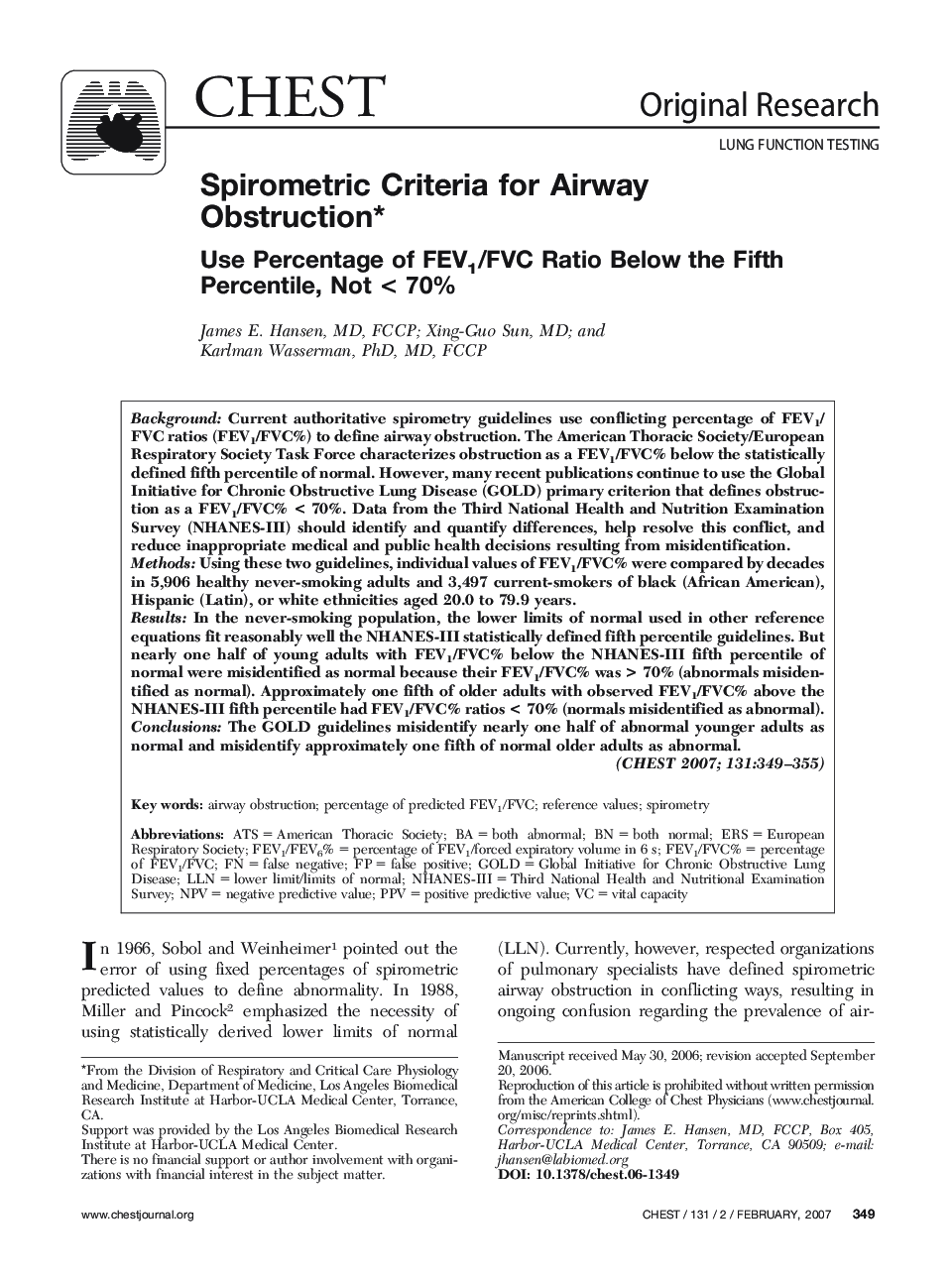| Article ID | Journal | Published Year | Pages | File Type |
|---|---|---|---|---|
| 2906561 | Chest | 2007 | 7 Pages |
Background:Current authoritative spirometry guidelines use conflicting percentage of FEV1/FVC ratios (FEV1/FVC%) to define airway obstruction. The American Thoracic Society/European Respiratory Society Task Force characterizes obstruction as a FEV1/FVC% below the statistically defined fifth percentile of normal. However, many recent publications continue to use the Global Initiative for Chronic Obstructive Lung Disease (GOLD) primary criterion that defines obstruction as a FEV1/FVC% < 70%. Data from the Third National Health and Nutrition Examination Survey (NHANES-III) should identify and quantify differences, help resolve this conflict, and reduce inappropriate medical and public health decisions resulting from misidentification.Methods:Using these two guidelines, individual values of FEV1/FVC% were compared by decades in 5,906 healthy never-smoking adults and 3,497 current-smokers of black (African American), Hispanic (Latin), or white ethnicities aged 20.0 to 79.9 years.Results:In the never-smoking population, the lower limits of normal used in other reference equations fit reasonably well the NHANES-III statistically defined fifth percentile guidelines. But nearly one half of young adults with FEV1/FVC% below the NHANES-III fifth percentile of normal were misidentified as normal because their FEV1/FVC% was > 70% (abnormals misidentified as normal). Approximately one fifth of older adults with observed FEV1/FVC% above the NHANES-III fifth percentile had FEV1/FVC% ratios < 70% (normals misidentified as abnormal).Conclusions:The GOLD guidelines misidentify nearly one half of abnormal younger adults as normal and misidentify approximately one fifth of normal older adults as abnormal.
